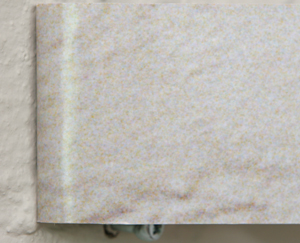 |
|
|
 |
|
10. Preservation strategy (2007)
creator(s) Sanneke Stigter (conservator/art historian)
It is very well possible that large format chromogenic paper will no longer be fabricated in the near future because the digital market is taking over the traditional photographic industry. This will cause a shift in the look of photographs. The image will no longer be build up out of the cyan, magenta and yellow speckles developed out of the chromogenic paper according to the grain of the film that is enlarged and projected on the paper during exposure. This way of printing means that for instance a dust particle on the photographic paper during exposure will become part of the photographic image. One could compare this to a missing pixel, a ‘drop out’ of the image, only it is characteristic of the analogue way of rendering the image. The influence of the grain of a film on the overall experience of the image could be experienced as a blur determining the sharpness of the image because we have been getting used to flawless ultra sharp digitally rendered images.
While we still can, it was decided to have spare prints made from the authorized photograph to be able to stay as close to the original look and feel of the 35 year old artwork as possible. Replacement with similarly produced prints will thus be possible in case of future damage. These are sealed and kept in cold storage to prevent discolouration. This however is no endless supply, but it was reckoned that when in a few years time the wall will be painted anew, a new situation will occur and the artwork requires new photographs to match the new colour and structure of the wall at the site. Until that time it is expected to have sufficient supply to make sure 'The wider the flatter' can be exhibited in good condition.
 Copyright Protected Copyright Protected
|